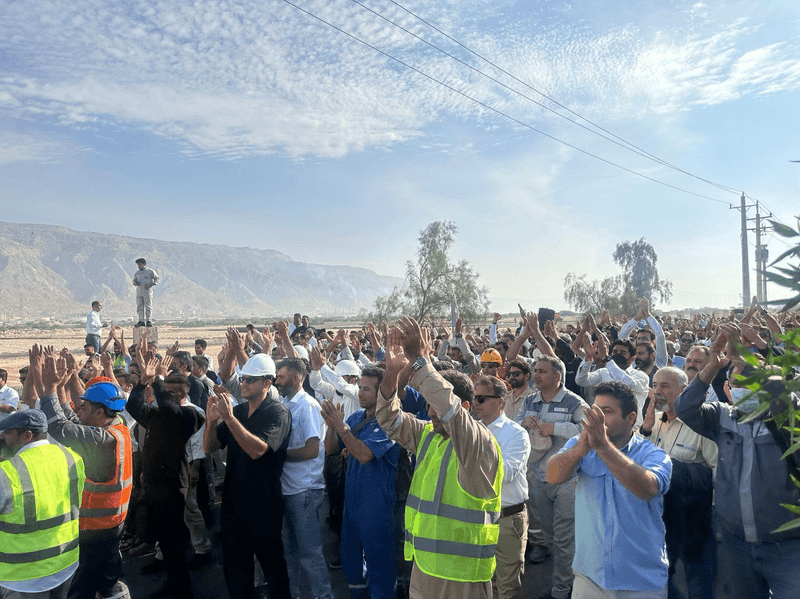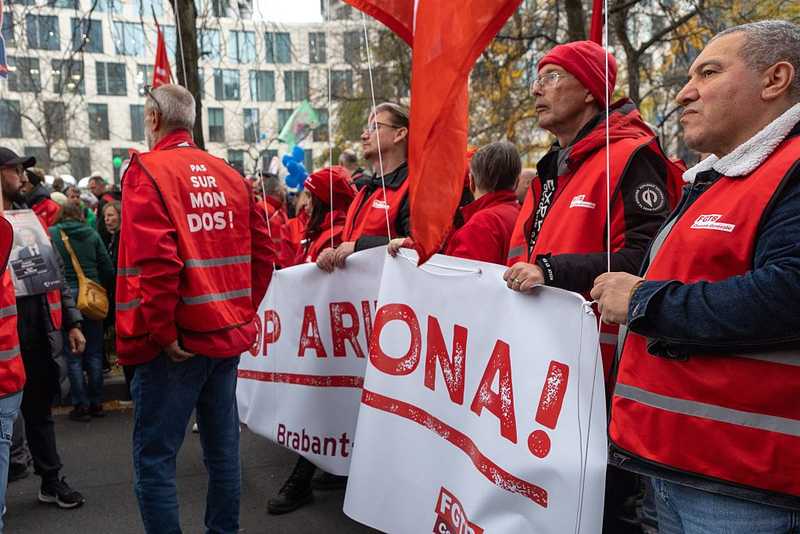
Recent transformations in the Brazilian economy have undermined the most significant channel for reducing social inequalities among workers: the labor market. It began with the reversal in economic policy in 2015, but radicalized its trajectory with the coup against President Dilma and the succession of the neoliberal Temer and Bolsonaro governments. These rapidly reversed the gains won by the working class during the period of economic growth and income redistribution.
In the economic sphere, one of the reasons for the coalescence of bourgeois factions in defense of the 2016 coup lies precisely in the dynamics of the labor market. Although much is said about the uneasiness of the Brazilian bourgeoisie and, in particular, of the upper middle classes with Petrobras' social programs, the crux of distributive conflict lies in the dynamics of the improvements in the labor market.
Figure 1: Average real income of the primary worker between 2009 and 2014
Source: PME/IBGE. Prepared by author.
The average income of Brazilians increased 36% between 2009 and 2014. This rise in average wage was strongly conditioned by two elements: the wage appreciation policy, which resulted — between 2004 and 2014 — in more than 70% real increase, and the drop in unemployment, which exerts upward pressure on average wages due to the dynamics of supply and demand.
An important element to consider regarding this persistence of average wage increases is not only the continuous drop in unemployment, but also the strengthening of workers' bargaining power as a result. In addition to the more general improvement of labor market conditions, minimum wage increase policy, other cash transfer policies, the power of labor unions and relatively rigid labor laws all contributed to the increase in workers’ bargaining power, which translated into significant wage gains.
The persistent rise in workers’ average wages, in an underdeveloped economy in which the ruling business classes have become accustomed to a productive structure based on low labor productivity, led to a tendency of the rate of profit to fall. This reached the edge of turning negative in 2015, which imposed losses on the national productive bourgeoisie. Instead of this scenario resulting in changes in the organic composition of capital, with advances under constant capital (machinery and equipment), the easiest solution was to invest in lowering the workers’ wage conditions.
Figure 2: Real average wage and productivity increase patterns in Brazil between 2004 and November 2014. 2004=100
The figure above (Figure 2) shows that unit labor cost outpaced productivity in 2008, and in periods of falling corporate profitability, wage costs become one of the main elements to explain the fall in profitability. The measurement of unit labor costs — usually presented as the average labor cost per unit of real production, or the ratio between total hourly compensation and output per hour worked — combines labor productivity with wage costs (the price of labor) and is closely related to Marx's theory of exploitation. As the Brazilian bourgeoisie, given its dependent position and its low propensity for innovation, would not invest in increasing productivity, the solution was to strike a blow against workers and thus recover lost profit margins.

Therefore, the 2016 coup had a clear economic motivation: to reestablish a pattern of accumulation centered on low wages. Disorganizing the labor market, unemployment, and the deregulation of labor relations were the key supporting elements.
Since then, the Brazilian economy has experienced a low level of economic growth, which doesn't seem to be a problem for the Brazilian bourgeoisie because if the total profits fall due to the low propensity to consume, there are continuous increases in the profit rate due to the reduction of salaries. In this way, low economic growth is important to ensure low levels of employment generation as part of an accumulation strategy based on maintaining a permanent industrial reserve army of labor which puts downward pressure on the wages paid.
Low growth, labor reform, and maintaining a double digit unemployment rate were followed by the novel coronavirus pandemic, which — in the absence of energetic policies to guarantee employment and income — further deteriorated labor conditions. Added to this are ongoing technological changes and the absorption of thousands of workers into app-based jobs, completely depriving them of important gains such as legal employment contracts, the entitlement to labor and social security rights, and the right to the guarantee of, at the very least, a minimum monthly wage.
Although a recovery is occuring in the labor market through informal workers and the self-employed, absorbing the contingent expelled from the employed population at the peak of the pandemic, the group of workers with the lowest levels of education is still the majority among the unemployed. In the second quarter of 2021, unemployment among workers who had not completed high school was 22.6%, three times more than unemployment among workers who completed higher education.
It is well known that unemployment has been dropping in Brazil and has almost returned to the pre-pandemic period unemployment rate. Elements such as vaccination coverage and the end of restrictions on economic activity — especially in services, which are more labor-intensive — help to explain why the unemployment rate is dropping while the participation rate is increasing.
On the other hand, the characteristics of this recovery in the level of employment point to a "new normal" in which the labor market emerges with a more precarious side in terms of the resilience of informal workers’ positions and even their expansion. Especially if we consider the advance of hiring methods by MEIs (Microempreendedores Individuais, or Individual Microentrepreneurs) and PJs (Pessoas Jurídicas, or Legal Entities), which are basically ways of establishing informal employment.
Accordingly, the labor market has been showing signs of recovery through the variable unemployment rate, but at the same time the unemployed population has been reduced at the expense of greater participation in employment in the private sector, without a labor contract, and self-employment, which had year-on-year increases of, respectively, 23.1% and 18.4% in the third quarter of 2021. Workers in the private sector with labor contracts grew much more modestly during this period with a year-on-year growth of only 8.6%, and employees in the public sector decreased in the employed population by -2.2%.
While employment in the private sector with a formal contract and employers themselves registered the lowest growth and recovery rates in the annual comparison between the quarters that cover the months of August-October, reaching growth marks of 8% and 1% respectively, the less formalized categories of the labor market presented the most prominent growth trajectories. This explains that the drop in unemployment occurred concurrently with greater precariousness and informality in the labor market with domestic employment, work in the private sector without a contract and self-employment showing high rates of annual variation.
Besides these informal or poorly protected arrangements, another negative point is that the Brazilian labor structure has shown a persistent increase in the composite rate of underutilization of labor, especially for those characterized as underemployed due to insufficient hours worked, which hit a historic record. There are 7.7 million people in this position, representing an increase of 7.2% in relation to the previous quarter. In absolute numbers, there are 520,000 more people in these working conditions.
If the comparison is made with the pre-crisis period, the total number of underemployed is 34% higher in July 2021 than the first quarter of 2020, and the absolute number is even more frightening: there are 2 million more people in this situation, characterized by the possibility of earning a monthly income below the minimum wage since the hours worked may not be enough to guarantee it. The increase in this contingent of workers is a consequence of high unemployment and a fragile recovery of the economy.
Also, regarding the profile of these workers, the factor that pushed up the total number of the underemployed was basically the self-employed and informal domestic workers, who do not have a formal contract. Together, the two groups are responsible for 70% of the 2 million more people in the underemployed condition.
Another category of workers that are generally included in the underemployed category, even though the employer collects taxes, are "temporary workers." This was one of the innovations brought by the labor reform which, as of yet, does not present a significant share of the total labor force. Between January and July 2021, the total number of workers registered in this type of employment contract, which, depending on demand, can be considered underemployed — if they work less than 40 hours a week and are willing to work more — reached 41,180, which is almost 50% more than in the same period in 2020.
The solution for a faster reduction in unemployment and the expansion of hours worked, and consequently of workers' income, fundamentally depend on the recovery of economic growth. In this sense, the prospects are not very encouraging. Projections indicate that Brazil will have the lowest growth rate among all Latin American countries in 2023.
As for income, the labor market situation is still bleak. The average real income received by workers for the quarter ending in September 2021 was R$2,515, which represents a 3.0% drop in comparison to the previous quarter and 6.6% if the comparison is with the average income for the same period in 2020. This may suggest that new hirings are being carried out with lower salaries than the workers laid off when the crisis began, which would explain the drop in income at the same time as the increase in the total number of employees. This phenomenon is incidentally very common in economic crises and in scenarios of persistent high unemployment rates. Compared to the same period in 2020, the average real effective income received fell slightly less than the income usually received, by 6.4%.
High unemployment and the precarious situation of the labor market tend to reduce the bargaining power of workers, which opens up conditions for an even greater reduction in wages, reversing the trajectory that prevailed during the PT governments. In this sense, July 2021 was the worst month compared to the last 12 months, with respect to salary negotiations, and the prospects are not favorable for the coming year, as pointed out by the Boletim Salariômetro (Salary Meter Bulletin), organized by the Fundação Instituto de Pesquisas Econômicas (FIPE, or the Foundation Institute for Economic Research). The average salary increase was only 7.6% while the accumulated inflation in the same period was 9.2%, so there was a wage loss of 1.6%.
Almost six out of ten collective agreements and conventions that were closed in the month of July ended with salary readjustment percentages for workers lower than the Consumer Price Index (Índice de Preços ao Consumidor). Only one in four collective bargaining agreements reached real gains for the workers. The average floor was R$1,345.00. By comparison, according to data from Diesse, in 2012, 97% of the salary negotiations either recovered inflation rates or achieved real gains.
The state of the labor market, the rising cost of living, and the absence of more vigorous policies to contain the damage of the economic and social crisis are elements that explain the rapid spread of poverty and extreme poverty in Brazil. The percentage of the population living in poverty increased in 24 of the 27 federal units (26 states and 1 federal district) in the country from the first quarter of 2019 to January 2021, as revealed in a study by the FGV IBRE (Getulio Vargas Foundation's Brazilian Institute of Economics). In January 2021, as many as 12.8% of Brazilians were living on less than R$246 per month, which amounts to R$8.20 per day (less than $2 USD per day).
The rates of increasing poverty, extreme poverty, and the drop in the average income of workers are at odds with what is happening at the top of the social pyramid. According to the latest edition of Forbes, Brazil was the stage for another 40 people to join the list of billionaires. There are now 315 people who have reached this status in Brazil. From 2018 to 2021, billionaires have seen a 75% increase, while the other extreme has also grown. The accumulated wealth of these billionaires is equivalent to something close to 17% of Brazil's GDP. The concentration of income and wealth, not only in Brazil but throughout the world, has presented itself as a problem of not only social and moral dimensions, but above all economic, to the extent that such a concentration causes problems of realized and effective demand.
What is to be done? Without the State and the development of adequate public policies, the reversal of this scenario will hardly be achieved by the unfettered operation of market forces alone, although practices of social responsibility by the private sector are laudable and should certainly be encouraged.
Therefore, one proposal establishes the need for the Brazilian State to act as an employer, committing itself to the creation of emergency work fronts (or employment initiatives). As already implemented in other moments in recent history and during the pandemic by several Brazilian states and municipalities, the Federal Government must urgently present a policy of work fronts that involve an ambitious goal of creating around 4 million new jobs.
The work fronts should be dedicated to unemployed workers with additional criteria such as the primary household income earner, length of time spent looking for work, low income, number of dependents and racial and gender criteria. The proposals involve the hiring of unemployed workers by organs and entities of direct and indirect public administration and with the guarantee of compensation of at least the minimum wage.
Another important point are public policies for labor and income that have conditions linked to the qualification of the labor force. In this sense, besides the work fronts, we propose the establishment of Work Guarantee and Professional Qualification Programs which can start immediately, but which must be maintained in the medium and long term. These programs have the objective, through the guarantee of a minimum wage for unemployed people, to relieve the pressure on the unemployment rate and its effects on the average wage level and, above all, to advance in the qualification of the national labor force, focusing on the highest employing sectors.
Technological advancement and the use of labor-saving technologies that can be automated expels a contingent of workers from traditional jobs, particularly those with fewer qualifications. Our proposal is for these workers to receive 20 hours per week of training in technical courses to be offered by the State and partner entities, and the other 20 hours spent in community service, allied or not with the profession to be performed, depending on the sector.
We also consider it fundamental to resume the policy of minimum wage increases, which not only compensates the annual inflationary losses, but also shares with all workers the fruits of the economy's growth, incorporating the positive variations of the GDP in the calculation of the adjustment. As already demonstrated in this analysis, the minimum wage fulfills several functions in society, both macroeconomic and in reducing inequalities in the functional income structure, with an emphasis on reducing regional, racial and gender inequalities.
It is also necessary to recognize that production structure and labor has changed in Brazil. Such a statement, however, cannot be a justification for the destructuring of the productive system, on the contrary. Just like the Unified Health System (SUS), we propose the creation of a Unified Employment System, which would be established by a Unified Labor Statute and would intend to regulate all productive activities, not only those governed by formal contracts. In this sense, advances in addressing the changes in the labor market should move towards the universalization of the constitutional rights included in articles 7 and 8 of the 1988 Constitution, ensuring guarantees and legal rights to all forms of work, formal or not, such as the right to vacations, parental and health leave, unemployment insurance, and paid time off.
Finally, we must urgently reverse several measures of the Labor Reform adopted in 2017 that go against the decent work agenda. The regulation of the labor market needs to drastically revise the obstacles for labor law created by the Labor Reform, especially the prohibitive process of access to the Labor Court, the reversal of the negotiated over the legislated, the undermining of union organizing, and to guarantee full rights to the new contracts created by the Reform. The overhaul, however, must look forward and incorporate labor rights for the new contractual forms that have emerged in the digital revolution.
Also, concerning the Labor Reform, we must review the precedence of collective negotiations in the sense of extending rights beyond what is defined in the single statute, observing the principles of the most beneficial rule, of the most favorable condition, and of non-negotiability. Following this, policies are also needed to guarantee protected employment against arbitrary dismissal or dismissal without just cause, ensuring the irreducibility of labor income; presumption of employment relationship when there is recognized work (Article 7, I of the FC); broad access to the courts based on the principle of free legal aid, with an end to procedural burdens on workers and the statute of limitations and, finally, review of the rules on subcontracting in the public and private spheres, with a guarantee of equal pay for equal work.
Juliane Furno holds doctoral and masters degrees in economic development from the University of Campinas (Unicamp) and is chief economist at the Center for Economic Studies (CEE) of the Institute for the Reform of State-Corporate Relations (IREE).
Illustrations: Gabriel Silveira



